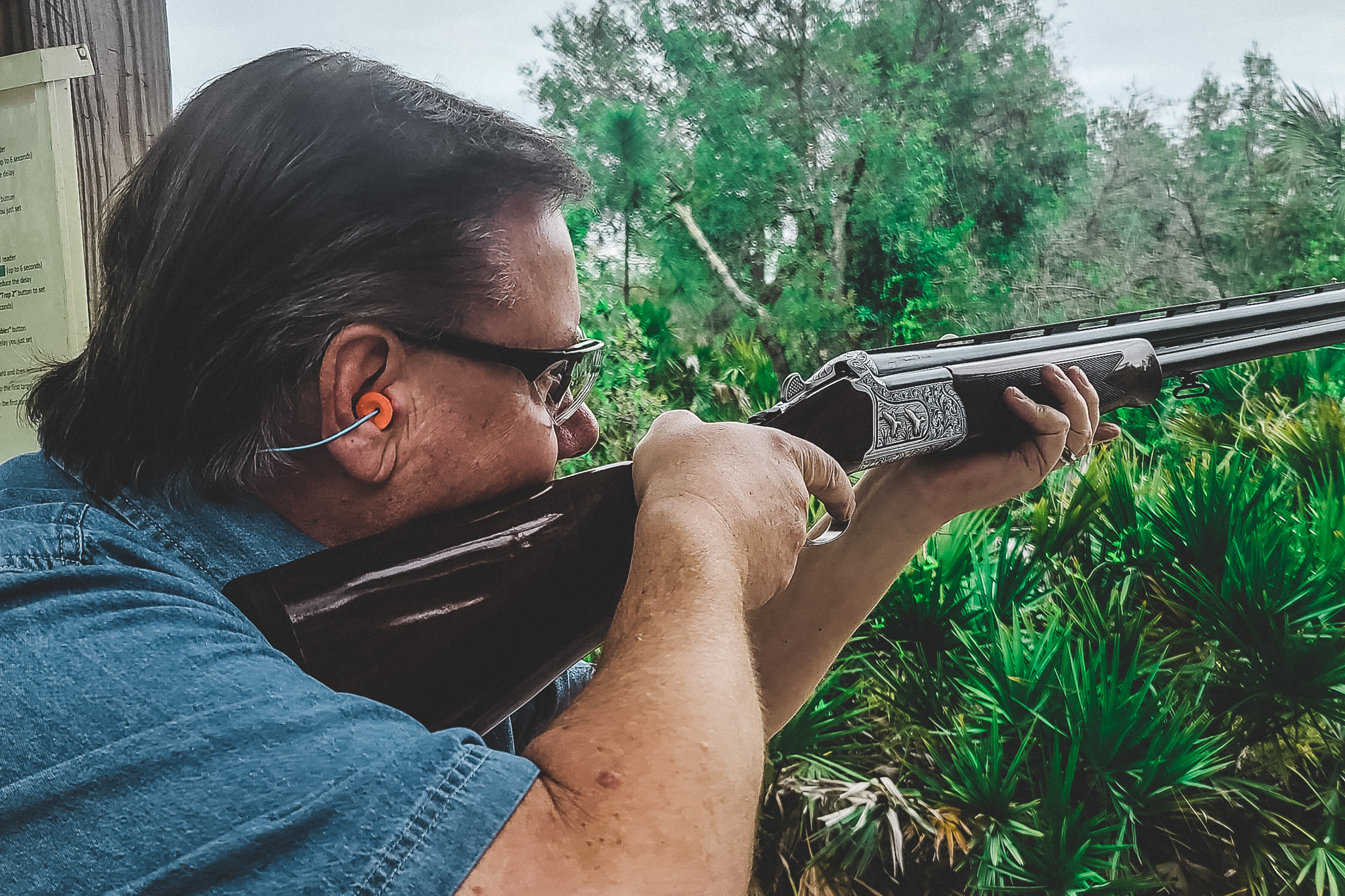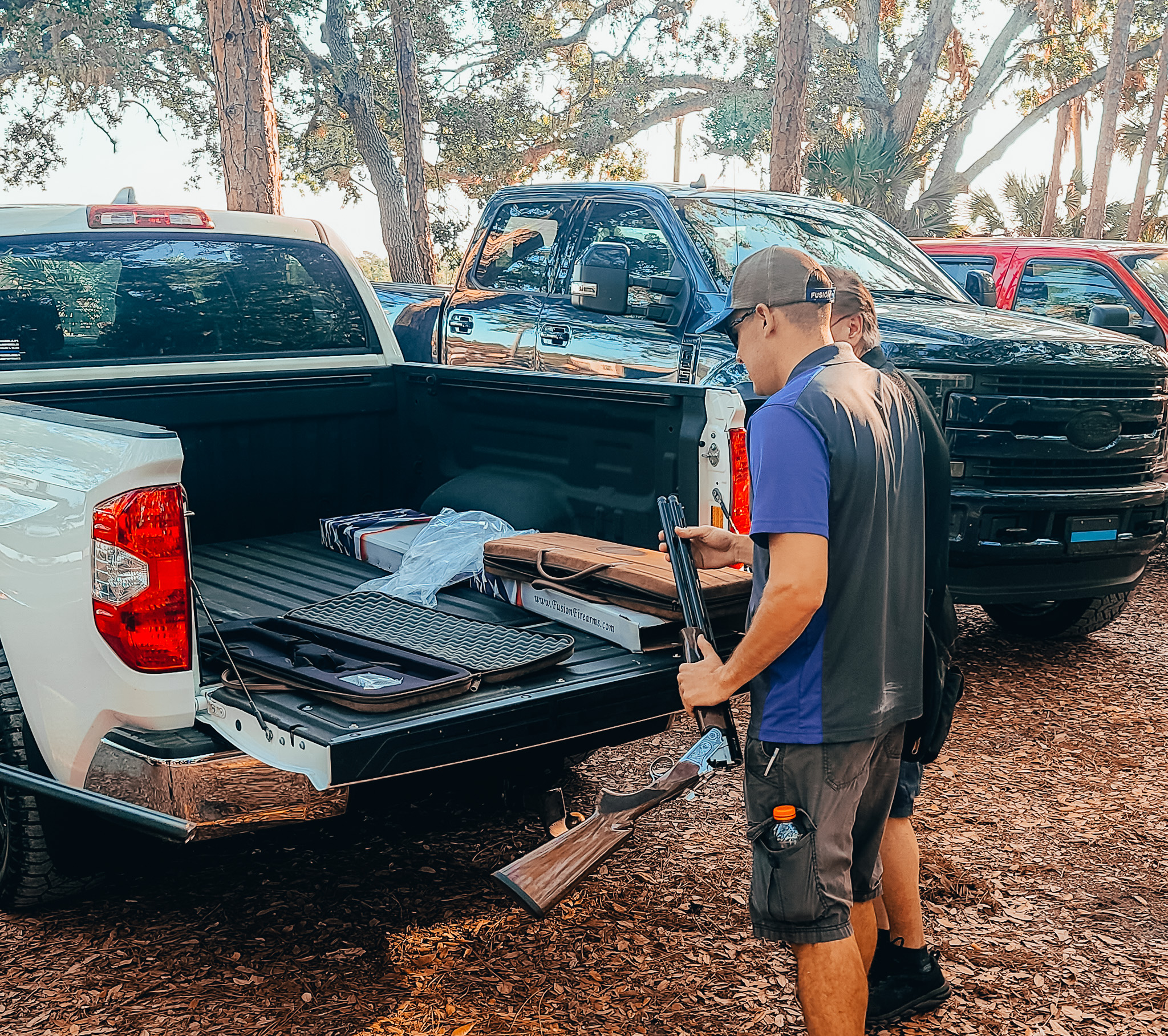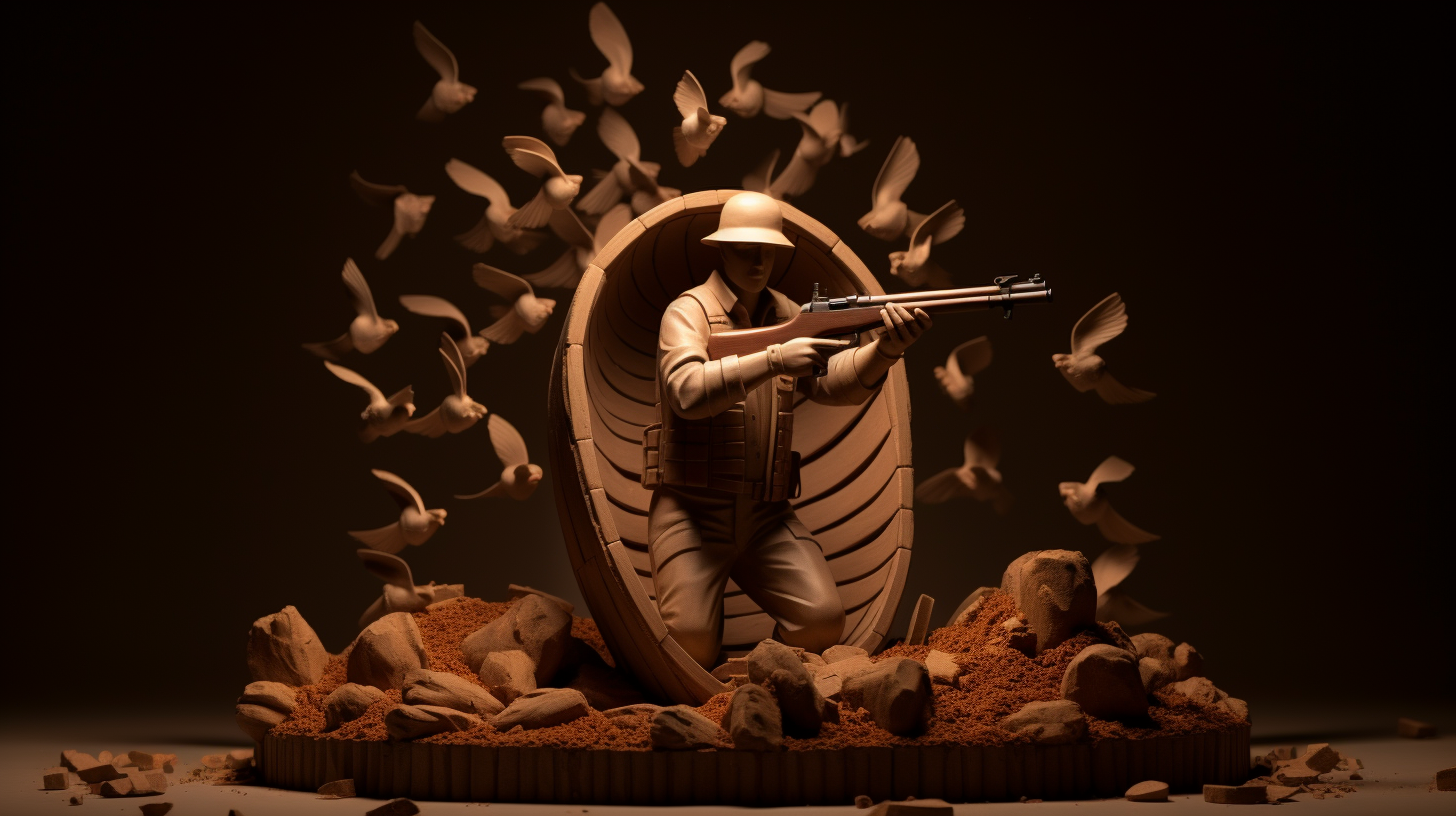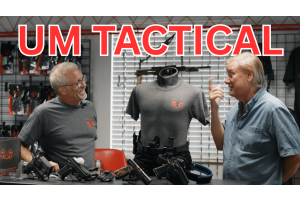
Everything You Need to Know About Sporting Clays Rules in 2023
0%

Sporting clays, often referred to as “golf with a shotgun,” provide an exciting and dynamic shooting experience that simulates real-life hunting scenarios. Whether you’re an experienced shooter or new to the sport, this comprehensive guide covers everything you need to know about the sporting clay rules, equipment, and techniques to excel in this thrilling and fast-growing sport. Get ready to embark on an exhilarating journey into the world of sporting clays!
Short Summary
- Understand Sporting Clays Rules, scoring system, target presentations & safety guidelines
- Join the National Sporting Clays Association (NSCA) for membership benefits and competitions
- Equip yourself with the right shotgun & ammunition. Practice techniques to improve your skills
Understanding Sporting Clays Rules
Sporting clays has its roots in England, where it was first played in the early 1900s. Nowadays, it is one of the most popular sports in America, with over three million people participating competitively and recreationally. Today sporting clays is designed to simulate the thrill of bird and rabbit hunting, with shooters navigating natural terrain and taking on a variety of challenging target presentations. Governed by the National Sporting Clays Association (NSCA), the rules for scoring, target presentations, and safety ensure a fair and enjoyable experience for all participants.
To excel in sporting clays, it’s crucial to understand the scoring system, target presentations, and safety guidelines. These rules not only provide a structure for competition, but also help ensure a safe and enjoyable experience for everyone on the course. With a solid grasp of the rules, you’ll be better prepared to tackle the challenges of this exciting sport and improve your skills.


Scoring System
In sporting clays, a round typically consists of 50 targets per person, and the shooter’s score is determined by the number of targets hit, with each target worth one point. The winner is the athlete with the highest score in that round. This scoring system is widely accepted and has even been mentioned in the popular Breaking Point series by a USA Today bestselling author.
As you develop your skills and become more proficient in hitting targets, you’ll see your scores improve and your confidence grow.
Target Presentations
One of the most intriguing aspects of sporting clays is the diverse range of target presentations that challenge shooters to adapt and refine their skills. The targets encountered in sporting clays differ from station to station, providing the most realistic replication of bird hunting. The customary terms for the target flight paths include:
- “out-goer”
- “incomer”
- “teal”
- “crosser”
- and others
These terms, including the crazy haired Colorado native, add to the variety and excitement of the sport.
Sporting clays involve shooting special targets such as:
- “rabbits” which roll on the ground
- Battue targets, which move on an edge and spin to show their face to the shooter
- smaller targets such as midi and mini, which are often used in addition to the standard 108mm target and are usually referred to as “sub-standard” targets
- In the world of sporting clays, today’s target arrangements are more diverse and challenging than ever before, offering a true test of a shooter’s skill and adaptability.
Safety Guidelines
Safety is paramount in sporting clays, and all participants must adhere to a set of guidelines that help ensure a secure and enjoyable experience for everyone involved. The Sporting Clays Safety Guidelines necessitate the wearing of eye and ear protection, compliance with the range commands, and the maintenance of the gun pointed in a safe direction at all times.
The National Sporting Clays Association (NSCA) Rule Book outlines the necessary gun handling procedures that must be adhered to at all times while on a course. These rules ensure the safety of all participants, including any awesome dogs that might be accompanying their owners at the venue.
Remember, even if you are the only person on the course, these safety guidelines must be followed to protect yourself and others, including the person she’s responsible for.
National Sporting Clays Association (NSCA)
The National Sporting Clays Association (NSCA) is the governing body for the sport, providing membership benefits and organizing competitions for shooters of all skill levels and age groups. Established in 1989 and headquartered in San Antonio, Texas, the NSCA has worked tirelessly to promote sporting clays and provide governance for the sport across the United States. By becoming a member of the NSCA, you can access a wealth of resources, events, and a network of fellow shooters to help you advance in your sporting clays journey.
In addition to providing governance and resources, the NSCA organizes a selection of competitions and championships, such as the National Sporting Clays Championship, the National Sporting Clays Team Championship, and the National Sporting Clays Open. These prestigious events offer shooters the opportunity to compete against the best in the sport and showcase their skills on a national stage.
Membership and Benefits
Joining the National Sporting Clays Association (NSCA) comes with a range of advantages that can help you enhance your sporting clays experience. As a member, you’ll gain access to exclusive tournaments, discounts on equipment, and educational resources to further develop your skills. Furthermore, membership in the NSCA connects you with a community of fellow shooters who share your passion for the sport, providing invaluable networking and learning opportunities.
To become a member of the NSCA, you simply need to pay an annual fee, with no additional requirements for joining. With membership, you’ll be better equipped to take advantage of the many resources, events, and connections available to you as you advance in your sporting clays journey.
Competitions and Championships
The NSCA organizes a variety of competitions and championships to cater to different skill levels and age groups. These events include:
- The National Sporting Clays Championship
- The National Sporting Clays Team Championship
- The National Sporting Clays Open
- Numerous regional and state-level competitions.
Participating in these events allows shooters to challenge themselves, hone their skills, and experience the thrill of competition. Whether you’re a seasoned competitor or an aspiring amateur, there’s a competition waiting for you, providing an opportunity to showcase your talents and learn from the best in the sport.
Equipment Essentials for Clay Target Shooting
To fully enjoy and excel in sporting clays, you need to have the right equipment. This includes shotguns, ammunition, and protective gear, all of which play a crucial role in your performance and safety on the course. Having the proper equipment not only ensures that you can effectively participate in the sport, but also helps you comply with the rules and guidelines set forth by the NSCA.
Selecting the appropriate shotgun, ammunition, and protective gear requires careful consideration of your needs and preferences, as well as adherence to the rules and regulations of the sport. In the following sections, we’ll discuss the essential equipment for clay target shooting, offering guidance on how to choose the right gear for your sporting clays experience.
Shotguns
When it comes to shotguns for sporting clays, the most prevalent type is the 12-gauge shotgun, which offers an effective balance of power and control for breaking clay targets. Popular shotgun types for sporting clays include over-and-under, semiautomatic, and pump-action, each with its own unique characteristics and advantages.
When selecting a shotgun, consider factors such as weight, balance, and fit to ensure that the gun is comfortable to use and meets your specific needs as a shooter.
LEARN MORE ABOUT OVER UNDER SHOTGUNS
LEARN MORE ABOUT SPORTING CLAY SHOTGUNS
LEARN MORE ABOUT TRAP SHOTGUNS
Ammunition
Ammunition used in sporting clays must meet specific requirements for safety and performance. The most prevalent type of ammunition utilized for clay target shooting is 12-gauge shotgun shells, which provide the necessary power and accuracy to break clay targets.
It’s also important to use ammunition that adheres to safety protocols for use in the environment and does not cause any harm to the shooter or bystanders. Always follow the guidelines set forth by the NSCA and your local shooting range when selecting ammunition for sporting clays.
Protective Gear
Safety is paramount in sporting clays, and all participants are required to wear protective gear during events. This includes ear and eye protection, which are mandatory for all shooters on the course. In addition to earplugs or earmuffs and shooting glasses, some shooters also choose to wear gloves for added hand protection.
Protective gear not only ensures your safety, but also helps you comply with the rules and guidelines of the sport. Invest in high-quality protective gear to guarantee a safe and enjoyable experience on the sporting clays course.
Course Design and Natural Terrain
Sporting clays courses are designed to provide a challenging and engaging experience by incorporating natural terrain features and a variety of target presentations. Unlike other clay target shooting disciplines, such as skeet and trap shooting, sporting clay courses are crafted to imitate the hunting experience, using the landscape to create a unique and realistic setting for each type of shot. This not only tests the shooter’s skill, but also adds an element of excitement and unpredictability to the sport.
By integrating natural terrain features, such as hills, trees, and water, sporting clays courses offer a diverse range of shooting challenges that keep participants engaged and motivated to improve their skills. In the sections below, we’ll delve into the specifics of course design and natural terrain features, exploring how they contribute to the allure and challenge of sporting clays.
Course Layout
A typical sporting clays course features:
10 to 15 stations
Each station presents targets from two or more trap machines
The typical course is usually set on a plot of more than 250 acres
The course includes diverse topography such as woods, fields, and uneven terrain
This variety in course layout and the use of natural terrain features enable course designers to create a wide array of target presentations
Shooters are challenged to hone their skills and adapt to various shooting scenarios.
The challenge of a sporting clays course is that no two stations are alike. Each station has its own station.
Natural Terrain Features
In sporting clays, natural terrain features play a significant role in creating a realistic and challenging shooting environment. Some examples of these features include:
- Uneven terrain
- Fields
- Woods
- Ponds
- Topography
These features can be utilized to craft a variety of shots that require different degrees of skill and precision. By using these features, course designers can simulate the conditions and challenges faced in actual hunting scenarios, providing shooters with an authentic and engaging experience.
When shooting in natural terrain features, it’s essential to be aware of the terrain and the type of shot being attempted. Additionally, environmental factors such as wind and weather can influence the trajectory of the shot, making it crucial for shooters to adapt their techniques and strategies accordingly. By practicing in various natural terrain settings, you’ll develop the skills and adaptability needed to excel in sporting clays.
Sporting Clays vs. Skeet and Trap Shooting
While all three disciplines - sporting clays, skeet, and trap shooting - involve shooting at clay targets, there are distinct differences in terms of target presentations and course layouts. Sporting clays courses are designed to imitate the hunting experience, with a variety of target presentations and natural terrain features.
In contrast, skeet shooting involves a fixed course layout with a predictable sequence of targets, while trap shooting focuses on single, outgoing targets launched from a single machine.
Understanding these differences will help you appreciate the unique challenges and appeal of sporting clays as a dynamic and exciting shooting sport.
LEARN MORE ABOUT SPORTING CLAYS
Skeet Shooting
Skeet shooting is a clay target shooting discipline that takes place on a semicircular field with two fixed stations located at opposite ends. Targets are launched from these stations in an orderly and predictable sequence, allowing shooters to focus on their timing and accuracy.
While skeet shooting offers a more structured and controlled environment, it lacks the diverse target presentations and natural terrain found in sporting clays, making it a distinctively different shooting experience.
LEARN MORE ABOUT SKEET SHOOTING
Trap Shooting
Trap shooting, another form of clay target shooting, involves single, outgoing targets launched from a single machine. Typically, there are five shooting stations in trap shooting, and participants rotate through these stations, taking turns at shooting the outgoing targets.
Although trap shooting shares some similarities with sporting clays, such as the use of shotguns and clay targets, the focus on single, outgoing targets and the absence of natural terrain features make it a distinct discipline within the world of clay target shooting.
LEARN MORE ABOUT TRAP SHOOTING
Tips for Improving Your Sporting Clays Skills
Improving your sporting clay skills requires dedication, practice, and a willingness to learn from experienced shooters. To excel in this sport, it’s crucial to develop proper technique, understand the various target presentations, and cultivate the mental resilience needed to perform under pressure. In this section, we’ll explore some tips and strategies to help you improve your sporting clay skills and reach your full potential as a shooter.
By focusing on practice techniques, mental preparation, and learning from experienced shooters, you can cultivate the skills and confidence needed to excel in sporting clays. With dedication and perseverance, you’ll see your scores improve and your abilities grow, allowing you to unlock new levels of achievement in this exciting and challenging sport.
Practice Techniques
Regular practice is essential for enhancing your sporting clays abilities, and it’s important to practice with a variety of targets and distances to develop proficiency in different shooting scenarios. Work on specific target presentations, such as:
- Crossing targets
- Incoming targets
- Outgoing targets
- Quartering targets
- This will improve your adaptability and skill in tackling various challenges.
In addition to practicing different target presentations, focus on honing your fundamentals, such as stance, gun mount, and follow-through. Proper technique is key to breaking clay targets consistently, so make sure to dedicate time to refining these essential skills.
Mental Preparation
Mental preparation is a crucial aspect of sporting clays, as it can impact your concentration, nerves, and overall performance. Developing a pre-shot routine, managing emotions, and visualizing success are all important components of mental preparation. A personalized pre-shot routine might include visualizing the target, taking a deep breath, and focusing on the target before pulling the trigger.
In addition to establishing a pre-shot routine, it’s important to manage your emotions and maintain a positive mindset. Techniques such as deep breathing, positive self-talk, and visualization can help regulate emotions and keep you focused on your performance. By cultivating mental resilience and a strong pre-shot routine, you’ll be better equipped to excel in the demanding and dynamic environment of sporting clays.
Summary
In conclusion, sporting clays offers a thrilling and dynamic shooting experience that challenges participants to adapt and refine their skills in a variety of realistic hunting scenarios. By understanding the rules, investing in the right equipment, and honing your technique through practice and mental preparation, you can unlock your full potential in this exciting and fast-growing sport. With dedication, perseverance, and a willingness to learn, you too can excel in the exhilarating world of sporting clays.
Frequently Asked Questions
What is the 20 second rule in NSCA?
In the National Sporting Clays Association (NSCA), shooters have 20 seconds to call for target after entering the shooting stand and between shots. Time is measured from the completion of viewing “show targets,” with warnings and penalties administered by the Course Manager or Shoot Management.
Shooters must adhere to the time limit or face warnings and penalties. The Course Manager or Shoot Management is responsible for administering these warnings and penalties. It is important for shooters to be aware of the time limit and adhere to it.
What is the NSCA Crossfire Program?
The NSCA Crossfire Program provides NSSA and NSCA members the opportunity to shoot registered targets in both Skeet and Sporting Clays without paying an additional membership fee.
How many punches do you need to move up in sporting clays?
To move up in sporting clays, you need 8 punches for C to B Class, 12 punches for B to A Class, 14 punches for A to AA Class, and 20 punches for AA to Master Class.
What is the scoring system for sporting clays?
The scoring system for sporting clays is based on the number of targets hit, with each target worth one point for a successful attempt.
How do target presentations in sporting clays differ from skeet and trap shooting?
Sporting clays feature a variety of unpredictable target presentations, in contrast to the more predictable sequences seen in skeet and trap shooting.
This makes sporting clays a great way to challenge yourself and hone your shooting skills.











